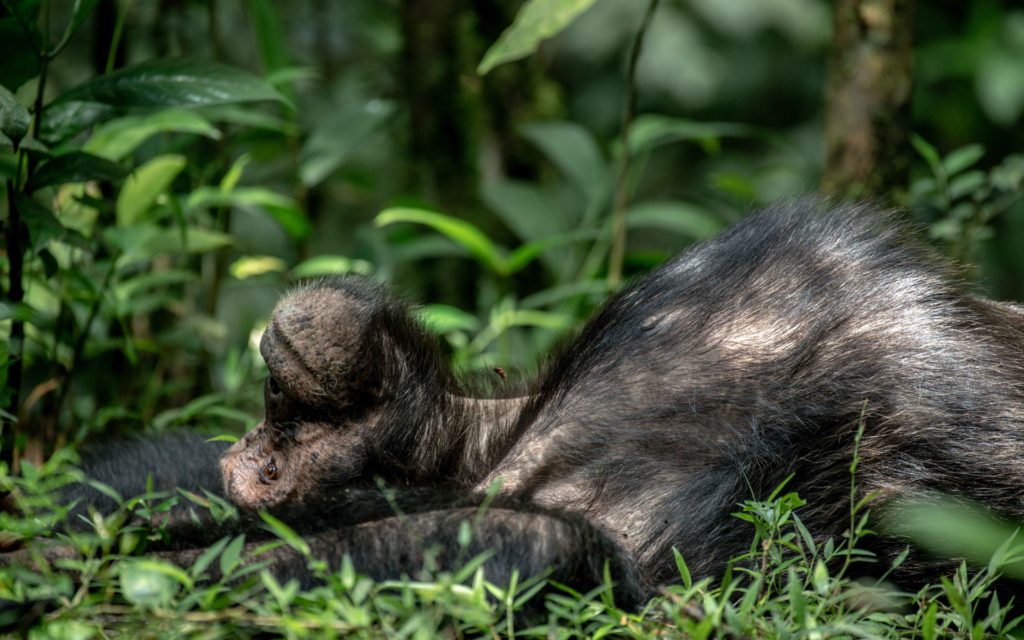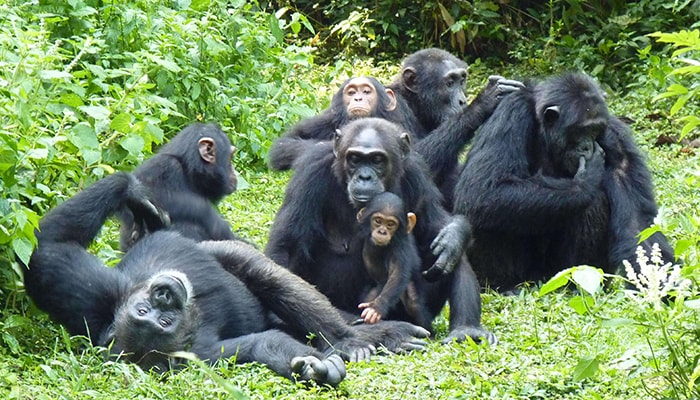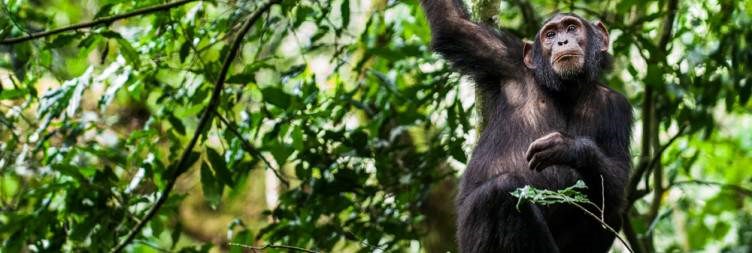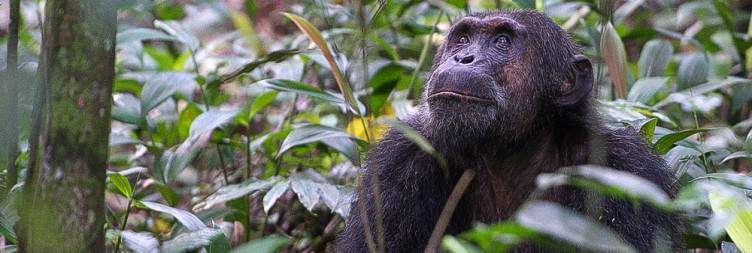Kibale National Park.
Kibale National Park is located in the districts of Kabarole and Kamwenge, approximately 320 kilometres, by road, west of Kampala, Uganda’s capital. Fort Portal in Kabarole District is the nearest large city to the national park.

Kibale National Park is home to a vast number of species of birds as well as the greatest variety and concentration of primates found anywhere in East Africa; 13 remarkable primate species, including L’Hoests and red colobus monkeys flourish within the park. Add to this the fact that the elusive forest elephants move seasonally through the forest and you can see why Kibale National Park is a superb safari destination. The park itself is easily accessible with a good internal infrastructure; many of the facilities are community based, thus providing the local population with the necessary revenue to ensure the long-term protection of the area.
At least 60 mammal species are present in Kibale Forest, and the park is particularly rich in primates with 13 species recorded, the highest total for any Ugandan national park. The 9 diurnal primates found at Kibale include; the vervet, red tailed, grey checked mangabey, blue monkey, L’Hoest, red colobus, olive baboo, black-and-white colobus, and Chimpanzee. The Kibale Forest area is the last Ugandan stronghold of the red colobus, although small numbers still survive in Semliki National Park. primate species, including L’Hoests and red colobus monkeys flourish within the park. Add to this the the fact that the elusive forest elephant move seasonally through the forest and you can see why Kibale National Park is a superb safari destination. The park itself is easily accessible with a good internal infrastructure; many of the facilities are community based, thus providing the local population with the necessary revenue to ensure the long-term protection of the area.
As the most accessible of Uganda’s major rainforests, Kibale is a home for over 13 remarkable primate species, including L’Hoest’s and red colobus monkey. The elusive forest elephant, smaller and hairier move seasonally into the developed part of the park.
Size of the Park.
The park covers an area of about 795 sq km extending southwards from Fort Portal to form a contiguous block with the Queen Elizabeth National Park.
Getting there in Kibale National Park.
320km from Kampala to Fort Portal and/or an hour’s drive from Kasese, accessible by public transport. The drive can take about 5 hours, for Trots and Safaris . There is an alternative route to Kibale forest although not often used but runs north from Mbarara via Ibanda and Kamwenge.
What to do in Kibale National Park.
The major activity in Kibale is; Chimpanzee tracking with a limited number of permits in the morning and afternoon per day – Permits must be booked before since they are on a very high demand all year round. You can do this by getting in touch with Trots and Safaris for advice.
Bird watching, forest walk and game viewing over an expanse of beautiful crater lakes lying between Fort Portal and Kibale Forest.
Best time to visit Kibale National Park.
Uganda is suitable for travel any time of the year, but not advisable during rainy seasons. Uganda is sunny most of the year with temperatures rarely rising above 29 degrees (84 degrees Fahrenheit). The average annual temperature is about 26 degrees Celsius (78° Fahrenheit).
The rainy season is from March till May and October till November. Light rain season falls in November and December. Dry seasons are from December to February and June to August. The best time, the best months of the year would be December to late February and from June to September, but rain is possible due to unpredictable seasonal changes.
Gallery



